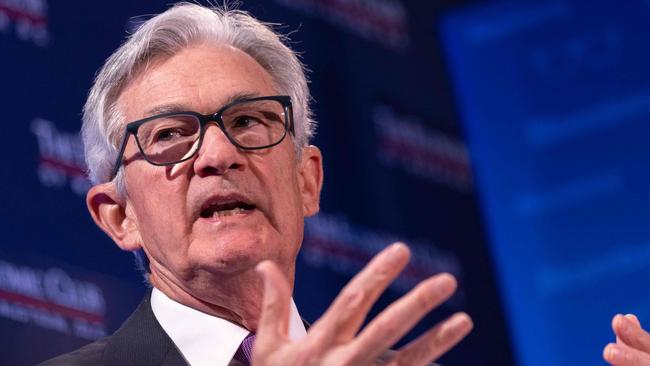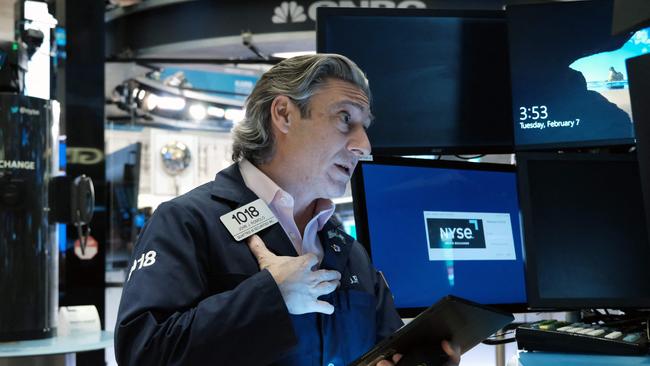US inflation keeps Fed on track for rate rises
The recent trend of cooling inflation in the US levelled off in January as energy, food, shelter and many other prices climbed, signalling more rate rises ahead.

Strong inflation in January is likely to keep US Federal Reserve officials on track to raise interest rates at their meeting in March and to signal that further increases will be likely.
The recent trend of cooling inflation levelled off in January as energy, food, shelter and many other prices climbed, latest figures showed.
The department’s consumer-price index rose 0.5 per cent in January, lowering the 12-month inflation rate to 6.4 per cent from 6.5 per cent in December and a recent high of 9.1 per cent in June.
The core CPI, which excludes volatile food and energy items, rose 0.4 per cent in January, bringing the 12-month core inflation rate to 5.6 per cent, down from 5.7 per cent in December.
The inflation report illustrates why Fed officials in recent public appearances have steeled themselves for a longer inflation fight than anticipated by many investors, who in recent weeks have anticipated a swifter decline.
The process of lowering inflation to the Fed’s goal of 2 per cent “is likely to take quite a bit of time. It’s not going to be, we don’t think, smooth,” Fed Chair Jerome Powell said at a moderated discussion last week.
“It’s probably going to be bumpy.” The possibility that inflation “will go away quickly and painlessly” isn’t the most likely scenario, he added. The most likely one is that “we’ll have to do more rate increases, and then we’ll have to look around and see whether we’ve done enough.” Overall inflation had slowed in recent months largely because of falling prices of energy and other goods. Large increases in housing costs have slowed but haven’t yet filtered through to official price gauges.

Mr Powell and several of his colleagues have for the past three months justified continued interest-rate increases by pointing to still-tight labour markets, elevated wage pressures and high inflation for labour-intensive services. They have highlighted a narrower subset of prices on services that exclude energy and housing, which they believe could better capture underlying price pressures.
Dallas Fed President Lorie Logan said in remarks overnight that goods prices had declined in recent months largely because of improving supply chains. She didn’t think such price declines were sustainable because “supply chains can’t recover twice,” she said during a speech in Texas.
If price increases for goods and housing return to their pre-pandemic rates but prices for services excluding energy and housing continue to rise at their recent pace of around 4 per cent a year, inflation would settle out closer to 3 per cent, said Ms Logan. The Fed targets 2% inflation over time.
“Broad-based and persistent services inflation is not the result of special circumstances like supply-chain disruptions that will eventually go away. Rather, I see it as a symptom of an overheated economy, particularly a tight labour market, which will have to be brought into better balance” she said.
Fed officials approved lifting their benchmark federal-funds rate on February 1 by a quarter of a percentage point to a range between 4.5 per cent and 4.75 per cent. They raised it by a half point in December, and by 0.75 point in November and the three meetings before that one.
Fed officials have raised rates by 4.5 percentage points over the past 12 months, the fastest pace since the 1980s, and have projected that the unemployment rate would rise to about 4.6 per cent by the end of this year.
The Labour Department said this month that employers added a robust 517,000 jobs in January, and the unemployment rate fell to 3.4 per cent, the lowest since 1969. The figures shocked forecasters, who had been expecting payroll growth to slow.
According to projections released after their policy meeting in December, most Fed officials thought they would raise the fed-funds rate to 5.1 per cent this year, which would imply quarter-point rate increases at their next two meetings, in March and May.
More than a third of officials anticipated lifting the rate above 5.25 per cent, which would call for another increase in June. No officials projected cuts this year.
Last month, investors in interest-rate futures markets had expected the central bank would lift rates to around 4.9 per cent this spring and then lower rates in the second half of the year. Those expectations have shifted notably in recent days. Investors now expect the Fed to raise rates to around 5.2 per cent by the summer and to hold rates above 5% through the end of the year, according to CME Group.
Mr Powell repeated his view last week that the central bank was prepared to raise rates higher if data suggested that economic activity was accelerating in ways that officials hadn’t anticipated.
“We’re going to react to the data,” he said. “So if we continue to get, for example, strong labour market reports or higher inflation reports, it may well be the case that we have to do more and raise rates more than has been priced in.”
– The Wall Street Journal



To join the conversation, please log in. Don't have an account? Register
Join the conversation, you are commenting as Logout